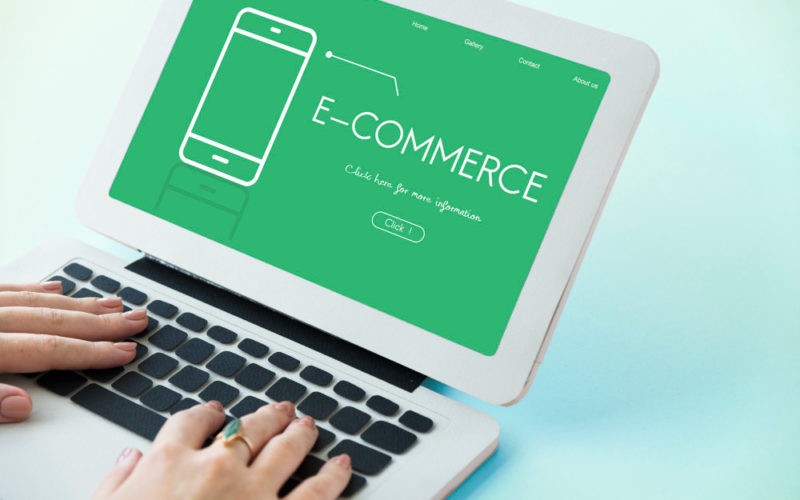With consumer preference rapidly shifting to online shopping, having a well-optimized e-commerce website is crucial for the success of any online business. With so many websites competing for attention, it’s important to ensure that your website stands out and provides a seamless user experience. In this article, we will discuss five effective strategies for optimizing your e-commerce website to improve website performance, increase customer engagement, and ultimately drive more sales.
Improve Website Navigation and User Experience
One of the most important aspects of optimizing an e-commerce website is ensuring that users can easily navigate and find what they’re looking for. In fact, a study by Baymard Institute found that 25% of online shoppers abandon their purchase due to a poor website navigation experience.
To improve website navigation and user experience, consider the following tips:
- Optimize menu structure: Keep your menu structure simple and easy to understand. Use clear and concise language to describe each category and subcategory.
- Use breadcrumbs: Breadcrumbs provide users with a clear path to navigate back to previous pages. They also help search engines understand the structure of your website.
- Use search functionality: Make sure your website has a search bar that is prominently displayed. This will allow users to quickly find what they’re looking for.
- Use clear and concise language: Use language that is easy to understand and avoids technical jargon. This will help users navigate your website more easily.
By implementing these strategies, you can enhance the navigation experience for your website visitors, making it easier for them to explore and find the products or information they desire. Additionally, integrating a headless storefront can further optimize your website navigation. A headless storefront decouples the frontend presentation layer from the backend, allowing for more flexibility and customization in delivering content to users. With a headless storefront, you can create a seamless and intuitive navigation system that adapts to various platforms and devices, providing an enhanced user experience and driving higher engagement on your e-commerce website.
Improve Website Performance
Website performance is crucial for providing a seamless user experience and keeping customers engaged on your e-commerce website. Here are some effective strategies to consider:
- Optimize for Core Web Vitals: Core Web Vitals is a set of metrics that measure website performance and user experience. Google has indicated that Core Web Vitals will be a ranking factor in search results. Some tips for optimizing Core Web Vitals include reducing page load times, improving mobile responsiveness, and minimizing the amount of visual movement on the page.
- Use a Headless CMS: A headless CMS is a content management system that separates content management and delivery systems. This allows for greater flexibility and control over how content is delivered to users. Benefits of using a headless CMS include faster page load times, easier scaling, and better security. With a headless CMS solution, businesses can effectively decouple their front-end presentation layer from the back-end content management system, enabling seamless integration with various platforms and devices.
- Faster Page Load Times: With a headless CMS, content is delivered through an API, which can result in faster page load times compared to traditional CMS platforms. This can improve user experience and reduce bounce rates.
- Easier Scaling: A headless CMS allows for easier scaling, as the back-end infrastructure can be separated from the front-end delivery system. This means that you can add new features and functionality to your website without having to worry about backend changes.
- Better Security: Because a headless CMS separates the content management and delivery systems, it can provide better security for your website. This is because any vulnerabilities in the front-end delivery system do not affect the back-end content management system.
By implementing these strategies, you can improve your website performance and provide a better user experience for your customers. This can lead to higher engagement rates, increased sales, and improved search engine rankings.
Also Read: Canada cloud server
Use High-Quality Product Images and Descriptions
Images are a critical component of any e-commerce website, as they help to showcase products and establish your brand’s visual identity. However, images can also slow down your website and negatively impact user experience. Here are some strategies to optimize your images:
- Use high-quality images: While it may be tempting to use low-quality images to save on file size, doing so can negatively impact your website’s visual appeal and perceived quality. Instead, use high-quality images that are optimized for web use.
- Use image compression: Image compression tools can reduce the file size of your images without sacrificing image quality. Popular image compression tools include Adobe Photoshop, Squoosh, and TinyPNG.
- Serve images of different sizes based on the device: By serving images that are optimized for the device being used, you can improve your website’s page load times and provide a better user experience. You can achieve this through responsive design or using server-side tools to detect the device and serve the appropriate image size.
- Use next-gen image formats: Next-gen image formats such as WebP and AVIF can significantly reduce image file size while maintaining image quality. Using these formats can lead to faster page load times and a better user experience.
- Lazy load images: Lazy loading is a technique that only loads images as the user scrolls down the page. This can help to reduce the initial load time of the page and improve overall page speed.
- Use a content delivery network (CDN): A CDN can help to speed up image delivery by storing copies of your website’s images on servers located around the world. This means that when a user visits your website, they will receive images from the server that is closest to them, reducing latency and improving page speed.
- By optimizing your images, you can improve your website’s performance and provide a better user experience for your customers.
Overall, by following these strategies, you can ensure that your e-commerce website is optimized for speed and performance, leading to improved user engagement, higher conversion rates, and increased revenue.
Implement a Responsive and Mobile-Friendly Design
In today’s mobile-first world, having a responsive and mobile-friendly e-commerce website is crucial for success. Here are some strategies for optimizing your website for mobile users:
- Use responsive design: Responsive design ensures that your website adapts to the screen size of the device being used. This means that your website will look great and function well on desktop, tablet, and mobile devices.
- Simplify navigation: Navigation on mobile devices should be simple and intuitive. Consider using hamburger menus, which allow users to access the menu with a single tap, or reduce the number of menu options.
- Optimize page speed: Mobile users expect fast load times. To ensure that your website loads quickly on mobile devices, consider optimizing images and using a content delivery network (CDN).
- Make buttons and text large enough to be clickable: On mobile devices, buttons, and text should be large enough to be easily clicked or tapped. A good rule of thumb is to use a minimum size of 44px for buttons and 16px for body text.
- Test your website on multiple devices: Testing your website on multiple devices can help you identify and fix issues that may be causing a poor user experience.
By implementing a responsive and mobile-friendly design, you can ensure that your e-commerce website provides a great user experience for all users, regardless of the device they are using to access your website.
Use Effective Marketing Strategies
Effective marketing strategies are essential for driving traffic to your e-commerce website and increasing sales. Here are some tips to consider:
- Use social media marketing: Social media platforms such as Facebook, Instagram, and Twitter can be powerful tools for promoting your e-commerce website. Use these platforms to showcase your products, engage with customers, and run targeted ad campaigns
.
- Use email marketing: Email marketing is a great way to keep in touch with customers and promote exclusive promotions and discounts. Make sure your emails are personalized, relevant, and have a clear call to action.
- Use targeted advertising: Targeted advertising can help you reach your ideal customer by using specific demographics such as age, location, and interests.
- Offer exclusive promotions: Offering exclusive promotions and discounts can incentivize users to make a purchase on your website. Make sure your promotions are relevant and have a clear call to action.
Conduct A/B Testing (Bonus)
A/B testing is a technique that involves comparing two versions of a webpage to see which one performs better. This can help you identify which elements of your website are working well and which ones need improvement.
Consider conducting A/B testing on the following elements:
- Call-to-action buttons: Test different colors, sizes, and placement of call-to-action buttons to see which ones perform best.
- Product descriptions: Test different product descriptions to see which ones lead to more sales.
- Landing pages: Test different landing pages to see which ones lead to more conversions.
By implementing these five effective strategies and conducting A/B testing, you can optimize your e-commerce website to provide a seamless user experience, increase customer engagement, and ultimately drive more sales.
Statistics and Examples
Here are some statistics and examples to support the effectiveness of these strategies:
- According to a study by Google, a one-second delay in mobile page load times can impact conversion rates by up to 20%.
- Video placed on the landing page improves conversion by 86% compared to text pages only.
- A study by Kissmetrics found that 47% of consumers expect a webpage to load in two seconds or less.
- An example of a successful e-commerce website optimization is ASOS, which increased its conversion rate by 38% by implementing a faster checkout process and optimizing its product pages.
By implementing these effective strategies and using statistics and examples to support their effectiveness, you can optimize your e-commerce website and increase your chances of success in the highly competitive online marketplace.
Conclusion
Optimizing your e-commerce website is crucial for achieving success in today’s digital landscape. By implementing the five strategies mentioned in this article, including improving website navigation and user experience, enhancing website performance, using high-quality product images and descriptions, implementing a responsive and mobile-friendly design, and utilizing effective marketing strategies, you can create a compelling online shopping experience that drives more sales and increases customer engagement.
Additionally, conducting A/B testing allows you to continuously refine and improve your website based on data-driven insights. Remember to leverage relevant statistics and examples to support the effectiveness of these strategies. With a well-optimized e-commerce website, you can position your business for growth and thrive in the competitive online marketplace.












